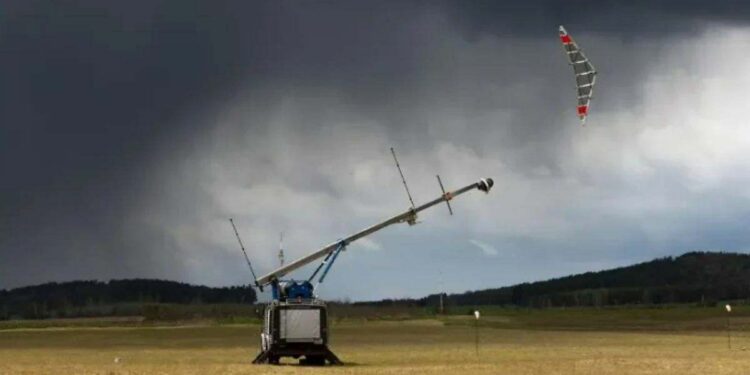A solution that arises to solve the problem of recharging electric cars has to do with wind energy. In this line, a project based on a high-tech kite to convert wind into electricity comes to light, thus achieving the energy autonomy that is so desired in the electromobility market.
The innovative system ‘TechnoHyb’ named EnerKite, which was recently presented at the Hannover Fair, comes hand in hand with Elli, from the Volkswagen Group, EnerKíte, and the Technical University of Braunschweig.
EnerKite is based on using high-tech kites to convert winds into electricity, which is stored in Elli’s Flexpole fast charger to charge electric vehicles. To carry it out, the initiative is funded by the Federal Ministry of Education and Research and is developed at the Open Hybrid LabFactory Campus in Wolfsburg.
The nomenclature between EnerKíte’s airborne wind turbines, capable of generating a base load from the wind, and Elli’s charging and storage technology, allows for a constant and independent supply of wind energy, even in remote areas.
The Elli system does not require complicated installation and operates as a fast charging station. It connects to the low-voltage grid through an integrated battery system, without requiring special transformers or expensive construction work.
Decentralized energy supply
Regarding this, Mark Möller, technical director of Volkswagen Group Charging (Elli), stated that “we are pleased that our Flexpole, already available in the market, can support this innovative initiative to redefine the limits of electromobility. By combining innovative technologies, we can make a sustainable contribution to the mobility of the future.”
Florian Breipohl, CEO of EnerKíte, commented that “EnerKíte systems provide constant power, converting green energy into a stable source of electricity. With a performance four times higher than that of conventional wind turbines of the same power, EnerKíte represents an exceptional alternative. This opens up new possibilities for decentralized energy supply and promotes the spread of electromobility in regions that were previously difficult to access.”


